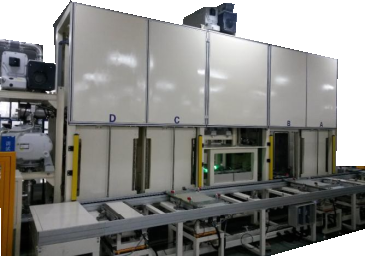Understanding the causes, detection methods, and prevention techniques of helium leaks is essential for maintaining the integrity and safety of various systems. Helium leak testing, a reliable method for identifying leaks, plays a crucial role in industries such as manufacturing, aerospace, and semiconductor production. In this article, we will explore the factors contributing to helium leaks, examine effective detection methods, and discuss preventive measures to mitigate the risks associated with these leaks.

Causes of Helium Leaks:
Helium, with its small atomic size and low molecular weight, has unique properties that make it an ideal tracer gas for leak detection. However, helium leaks can occur due to various factors, including:
- Material Degradation: Over time, materials used in seals, gaskets, or joints may degrade, leading to small gaps or cracks through which helium can escape.
- Mechanical Damage: Physical damage caused during installation, maintenance, or operation can create pathways for helium to leak. This includes scratches, abrasions, or deformation of components.
- Manufacturing Defects: Poorly executed manufacturing processes, such as improper welding or sealing techniques, can result in helium leakage points within the system.
Detection of Helium Leaks:
Accurate detection of helium leaks is crucial to identify potential vulnerabilities and prevent system failures. Several reliable methods are employed for helium leak detection:
- Mass Spectrometry: This sensitive technique involves introducing helium into the system and using a mass spectrometer to analyze the air samples for helium concentration. Even minute levels of helium can be detected, allowing precise leak localization.
- Helium Sniffing: Helium sniffing involves using a handheld probe or sniffer probe that detects helium concentration in the vicinity of potential leak points. It is a widely-used method for localizing leaks in a targeted manner.
- Vacuum Testing: Vacuum testing involves creating a vacuum inside the system and monitoring the pressure for any indication of helium ingress. A rise in pressure can suggest the presence of leaks.
Prevention of Helium Leaks:
Prevention is key to avoiding the costly consequences of helium leaks. Here are some effective preventive measures:
- Regular Maintenance: Implementing a robust maintenance schedule ensures that seals, gaskets, and joints are inspected regularly, identifying and addressing any signs of degradation or wear promptly.
- Proper Installation: Ensuring proper installation of components, including adequate tightening of fittings and proper welding techniques, reduces the likelihood of helium leakage.
- Quality Control: Stringent quality control measures during the manufacturing process minimize the risk of manufacturing defects and improve overall system integrity.
Understanding the causes, employing effective detection methods, and implementing preventive measures are crucial for managing the risks associated with helium leaks. By conducting helium leak testing and adopting preventive strategies, industries can enhance the safety and reliability of critical systems. Stay vigilant, regularly inspect for potential leaks, and address them promptly to ensure the integrity of your systems. With helium leak detection, you can stay one step ahead in maintaining optimal performance and avoiding costly downtime.







